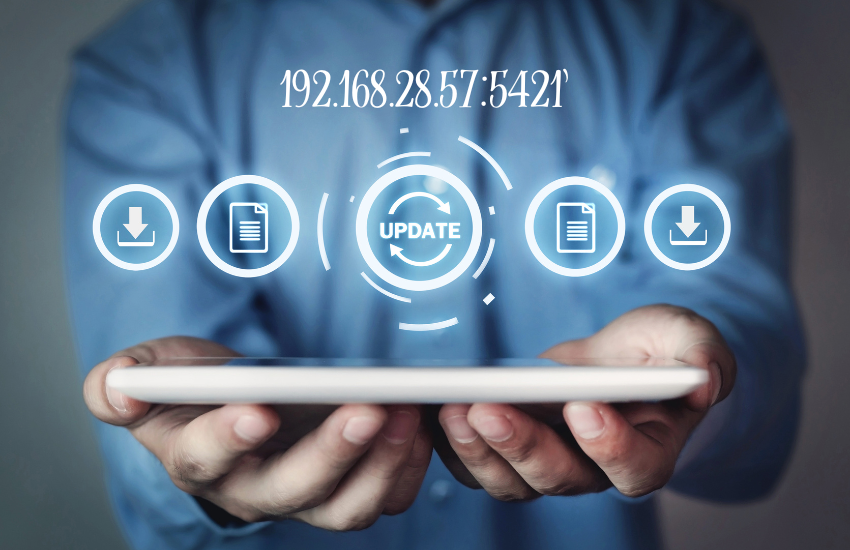Understanding Private IP Addresses
Difference Between Public and Private IPs
IP addresses are categorized into two main types: public and private. Public IP addresses are used to identify devices on the internet and are unique across the entire web. In contrast, private IP addresses are used within a local network and do not need to be unique globally. These private IPs allow multiple devices in a local network to communicate with each other without exposing them directly to the internet.
Common Uses of Private IPs
Private IP addresses are primarily used in homes, businesses, and other organizations where multiple devices need to connect to a local network, like a Wi-Fi network, and communicate with each other. Devices such as computers, printers, and smartphones typically use private IP addresses.
The Role of the 192.168.28.57:5421′ Subnet
Overview of the 192.168.x.x IP Range
The 192.168.x.x range is a block of private IP addresses designated by the Internet Assigned Numbers Authority (IANA) for use in private networks. This range is part of the larger 192.168.0.0/16 subnet, which allows for approximately 65,536 different IP addresses. These are commonly used in residential and small business networks.
Use Cases in Local Networks
This IP range is typically employed by routers to assign private IP addresses to devices within a local network. For instance, when you connect to your home Wi-Fi, your router might assign your computer the IP address 192.168.1.5, while another device on the network might get 192.168.1.6.
Specifics of 192.168.28.57
Overview of 192.168.28.57
Possible Applications and Devices Associated with this IP
A device assigned the IP address 192.168.28.57 could be anything from a computer, smartphone, or tablet to a smart home device like a thermostat or a security camera. The specific assignment would depend on the network setup and the number of devices connected.
Port Numbers in Networking
Explanation of Port Numbers
Port numbers are integral to networking and are used to identify specific processes or services running on a device. When data is sent over a network, it is directed to a specific port number on the receiving device. This allows the device to know which application should handle the data.
Commonly Used Ports in Networking
Certain ports are universally recognized for specific services. For example, port 80 is typically used for HTTP traffic (web browsing), while port 443 is used for HTTPS (secure web browsing). There are 65,536 possible ports, and they range from 0 to 65535.

The Significance of Port 5421
What Port 5421 Is Used For
Port 5421 is less commonly used in standard network configurations, but it may be employed by specific applications or devices that require a custom or less common port. This port could be used for a specific service within a private network, possibly related to IoT (Internet of Things) devices or specialized software.
Protocols Associated with Port 5421
Depending on the application, various protocols might use port 5421. Understanding which protocol is associated with a particular port is crucial for troubleshooting and configuring network services effectively.
How to Access 192.168.28.57:5421
Steps to Access the IP Address
To access a device using the IP address 192.168.28.57 on port 5421, you would typically enter the address into a web browser or connect via a specialized application that supports the specific service or protocol running on that port. For instance, you might type http://192.168.28.57:5421 into your browser if the device is running a web server on that port.
Common Scenarios for Accessing this IP
Scenarios might include accessing a web interface for a router, a configuration page for a networked device, or managing a specific application that communicates over port 5421. This might be more common in environments where devices are configured to use non-standard ports for enhanced security or reduced conflict with other services.
Troubleshooting Connectivity Issues
Common Issues with 192.168.28.57:5421′
Connectivity issues may arise if the device assigned to 192.168.28.57 is not powered on, if there’s a problem with the network configuration, or if port 5421 is being blocked by a firewall.
Solutions to Common Problems
Troubleshooting steps include verifying the device’s power status, checking the network configuration, ensuring that port 5421 is open and not blocked by firewall settings, and confirming that the correct IP address and port number are being used.
Security Considerations
Risks of Unsecured Access
Leaving access to 192.168.28.57:5421 unsecured can lead to unauthorized access to sensitive devices on your network. This is particularly risky if the device in question is a critical component like a security system or a network-attached storage device.
Best Practices for Securing Local IPs
Securing access to your local IP addresses involves using strong, unique passwords, ensuring that your router’s firewall is properly configured, disabling unnecessary services or ports, and keeping your firmware and software up to date.
Network Configuration Tips
How to Configure Your Router for Specific IPs and Ports
If you need to ensure that a device consistently uses the IP address 192.168.28.57, you can assign it a static IP address through your router’s configuration page. Similarly, if you need to access a specific service on port 5421 from outside your network, you may need to set up port forwarding.
Managing Device Connections
In a network with many devices, it’s essential to manage IP assignments and port usage effectively to avoid conflicts and ensure smooth operation. This may involve assigning static IPs to key devices or using DHCP reservations.
Using 192.168.28.57:5421 in IoT
Role in Internet of Things (IoT) Devices
In IoT, specific IP addresses and ports like 192.168.28.57:5421 may be used to manage or interact with smart devices, such as security cameras, smart lights, or home automation systems.
Common IoT Applications for this IP and Port
A typical use case might be accessing the control panel of a smart device through a web interface running on port 5421, allowing the user to configure or monitor the device remotely.
Monitoring Network Traffic
Tools for Monitoring Traffic on Specific IPs and Ports
Various tools are available for monitoring network traffic, such as Wireshark, which allows you to analyze data packets and see which IP addresses and ports are actively communicating. This can help you identify any unusual activity on 192.168.28.57:5421.
Importance of Traffic Monitoring
Monitoring traffic is crucial for maintaining network security and performance. By keeping an eye on what’s happening on specific IPs and ports, you can spot potential security breaches or bandwidth issues before they become serious problems.

Advanced Networking Concepts
NAT (Network Address Translation) and its Role
NAT is a technique used by routers to map multiple private IP addresses to a single public IP address. This is essential for devices on a private network to access the internet while remaining hidden behind a single public IP.
Port Forwarding and its Benefits
Port forwarding allows external devices to access services on a local network by mapping an external port to an internal IP address and port. This is often necessary for accessing local devices from outside the network, such as when configuring remote access to a home security system.
Real-World Examples
Case Studies Involving 192.168.28.57:5421
Consider a small business where a specific server runs a custom application on port 5421, accessible via 192.168.28.57. This setup might be used for internal data management, requiring secure, consistent access by multiple employees.
Practical Applications in Home and Business Networks
In home networks, 192.168.28.57:5421 might be used for a smart home hub that controls various IoT devices. In business, it could support internal applications or manage local services crucial for daily operations.
Conclusion
In summary, understanding how to manage and troubleshoot IP addresses like 192.168.28.57 and ports like 5421 is critical for maintaining a secure and efficient network. Whether in a home or business environment, ensuring that devices are correctly configured and secured is essential for protecting your data and ensuring smooth network operations.
FAQs
What is the difference between public and private IP addresses?
Public IP addresses are used for devices to communicate across the internet, while private IP addresses are used within a local network and are not routable on the internet.
How do I access 192.168.28.57:5421?
You can access this IP address by entering http://192.168.28.57:5421 into your web browser, assuming a service is running on that port, or by using a specific application that supports the protocol running on port 5421.
What is port 5421 used for?
Port 5421 is typically used by specific applications or devices for custom services within a local network, though its exact use can vary depending on the setup.
Why can’t I connect to 192.168.28.57:5421?
Common reasons include the device being powered off, network configuration issues, or the port being blocked by a firewall.
How do I secure my private IP address?
Secure your IP address by using strong passwords, enabling firewall protection, keeping devices updated, and disabling unnecessary services.
What are common troubleshooting steps for network issues?
Check device power, verify IP and port settings, ensure the correct network is being used, and check for any firewall restrictions.


